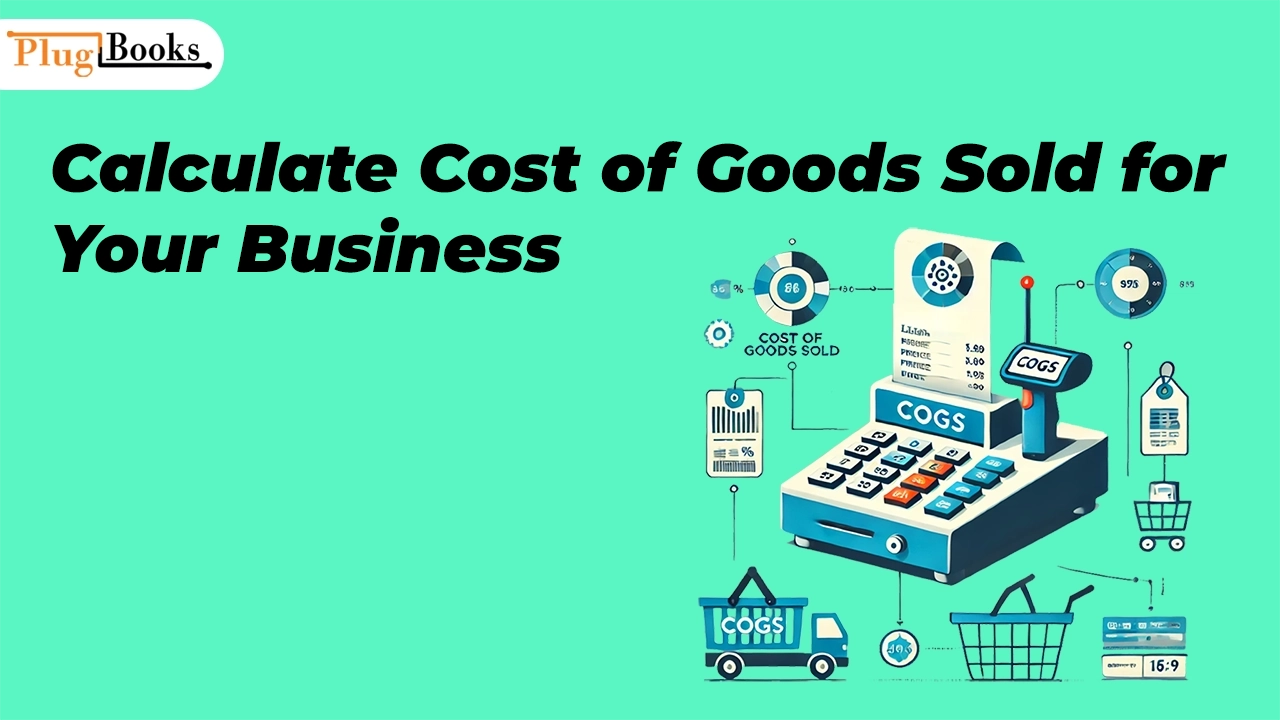Should you be a business owner, you have probably heard the phrase “cost of goods sold” (COGS) tossed about. But more precisely what does it mean, and why is it important to calculate cost of goods sold?
COGS, then, essentially shows the direct expenses associated with manufacturing or buying the items you offer within a certain period. Whether your company sells items, a factory, a retailer, or any other type of business, learning how to figure out the cost of goods sold will help greatly affect your financial situation.
This tutorial will walk over exactly how to figure the cost of products sold, why it’s so important for your company, and how it could affect your profitability and pricing policies.
What is the Cost of Goods Sold (COGS)?
Let’s define “cost of goods sold” before we get into the computation. COGS are direct manufacturing costs connected to the goods you sell. This addresses expenses such as:
- Production’s raw resources.
- Direct labor expenditures for manufacture or assembly of goods.
- Factory overheads are any expenses closely related to the manufacturing process.
COGS notably only covers costs directly related to commodity manufacture. It ignores running costs such as utilities, rent, and marketing; all are regarded as distinct.
Knowing your gross profit margin requires an awareness of the cost of goods sold. Your gross margin will shrink in a high COGS situation and vice versa.
How to Calculate Cost of Goods Sold (COGS) for Your Business
Calculate Cost of Goods Sold is actually quite simple if you know the approach, even if it looks challenging. The basic calculation figuring cost of goods sold is:
COGS = Beginning Inventory + Purchases – Ending Inventory
Let we dissect this into reasonable steps:
1. Beginning Inventory
This is the value of your inventory at the start of the period. If you’re calculating COGS for a year, it’s the inventory on hand at the beginning of that year. For the first year of business, this number will be zero.
2. Purchases During the Period
You then add the expense of any further purchases made throughout the period. This covers fresh merchandise purchased for resale, new inventory, or raw resources.
3. Ending Inventory
You will have to figure the value of the left unsold merchandise at the end of the term. Your ending inventory is here; you find the cost of products sold by subtracting this figure from the total of the initial inventory and purchases.
The Formula to calculate cost of goods sold:
Assume you run a retail store and find here your numbers:
- Starting with $10,000 for inventory:
- Purchases over the period total $20,000.
- Finish Inventory: 5,000 USD.
Your COGS would be:
COGS = $10,000 + $20,000 – $5,000 = $25,000
Over the period, your entire cost of goods sold comes to $25,000.
The formula to calculate cost of goods sold helps businesses determine the total cost of products sold over a specific timeframe.
Why Is It Important to Calculate Cost of Goods Sold?

Knowing how to calculate the cost of goods sold is rather vital for several different reasons.
- Profitability
Calculating cost of goods sold will help you to ascertain your manufacturing product expenditure in terms of money. This clarifies your profitability margin. Usually, a greater COGS results in smaller profit margins; so, maintaining good earnings depends on controlling this figure. - Tax Purposes
The financial statement of your firm depends much on COGS. It immediately changes the computation of your taxable income. Your taxable income rises with declining COGS; so, knowing how to exactly calculate cost of goods sold will help you control your tax obligations. - Inventory Management
Understanding the cost of goods sold facilitates more effective tracking of your inventory levels. Understanding your COGS will help you decide on stock buying, pricing, and strategies for minimizing extra inventory.
Tips for Accurately Calculating COGS
Knowing how to calculate cost of goods sold today will help you to review some pointers to guarantee the most correct estimate:
- Track Inventory Regularly
Especially if your company deals in a lot of products, make sure you often check your inventory. This guarantees, when computing COGS, correct beginning and ending inventory values. - Include All Direct Costs
Make sure you consider all direct expenses that help to create your products. This covers labor expenses as well as any other direct production-related expense including raw supplies. - Use Accounting Software
Tracking and computing your COGS quickly can be accomplished with accounting software. Many tools automatically update your beginning and ending inventory, therefore simplifying the COGS computation process and reducing error count.
How COGS Affects Your Pricing Strategy
Knowing how to calculate cost of goods sold will help you to discuss how this number influences your pricing policy.
Your COGS is an integral part of determining your product price. If your COGS is high, you’ll need to set higher prices to maintain a profit. However, if you want to remain competitive, you need to balance your prices carefully. Knowing how to figure the cost of products sold will help you to adjust your price to guarantee that you are making a healthy profit and covering your expenses.
Conclusion: Start Calculating Cost of Goods Sold Today!
To sum up, any business owner must be able to know how to calculate cost of goods sold if they are to run their company. It helps you understand your profitability, manage your inventory, and make more informed financial decisions. If you haven’t already, take the time to calculate your COGS regularly to stay on top of your business’s finances.
By mastering COGS, you’ll be better equipped to optimize your pricing strategy and improve your bottom line.
More Related Blogs:
- Max FBA Box Weight 2025: Limits & Compliance Tips
- How to Set Up and Manage a Chart of Accounts for eCommerce
- Simple Online Loss and Profit Statement from Accountant
Learn more on PlugBooks!




